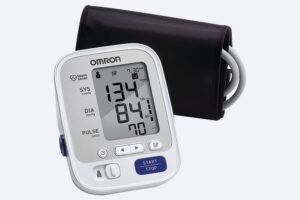In today’s fast-paced world, monitoring your health has never been more crucial, especially when it comes to managing blood pressure. Hypertension, also known as high blood pressure, affects millions of people globally and can lead to serious health complications if left unchecked. A blood pressure monitor is an invaluable tool for anyone looking to maintain their cardiovascular health. In this guide, we’ll explore the benefits, features, and how to effectively use a blood pressure monitor at home.
What is a Blood Pressure Monitor?
A blood pressure monitor is a medical device that measures the pressure of the blood against the walls of your arteries. This measurement is typically expressed as two numbers: systolic pressure (the pressure during a heartbeat) over diastolic pressure (the pressure between heartbeats). Keeping track of these numbers is essential for preventing and managing health issues related to blood pressure, such as heart disease and stroke.

How to Use a Blood Pressure Monitor
- Choose the Right Time: It’s best to measure your blood pressure at the same time each day for consistent results.
- Prepare: Sit quietly for five minutes before taking a reading. Avoid caffeine, exercise, or smoking in the hour before the test.
- Position Yourself: Sit with your back supported, feet flat on the floor, and your arm at heart level.
- Apply the Cuff: Place the cuff snugly around your upper arm, ensuring it’s positioned correctly according to the manufacturer’s instructions.
- Take the Reading: Follow the monitor’s prompts, and remain still during the measurement. Record the results and any notes on conditions or feelings during the reading.
- Store the Information: Keep a log of your readings to discuss with your healthcare provider.
- Features to Look for in a Blood Pressure Monitor
- Accuracy: Choose a monitor that has been validated for accuracy to ensure reliable readings.
- Display: A large, easy-to-read display makes it easier to interpret your results.
- Memory Function: Many modern monitors save your previous readings, allowing you to track changes over time effortlessly.
- Cuff Size: Ensure the cuff fits comfortably, as an improper fit can lead to inaccurate readings.
- Portability: A lightweight design makes it easy to take your monitor with you on the go.
Benefits of Using a Blood Pressure Monitor
- Early Detection of Hypertension: Regular monitoring allows for early identification of high blood pressure, enabling timely intervention.
- Medication Management: For individuals on blood pressure medication, home monitoring helps determine the effectiveness of the treatment and adjust dosages as necessary.
- Empowers Self-Monitoring: With a personal blood pressure monitor, individuals can take charge of their health and develop a better understanding of their cardiovascular condition.
- Convenience of Home Use: No need for trips to the clinic; you can check your blood pressure at your convenience, making it easier to maintain a consistent monitoring schedule.
- Tracks Progress Over Time: Keeping records of your blood pressure readings helps you and your healthcare provider gauge your health trends and adjust treatment as needed.
Conclusion
A blood pressure monitor is more than just a gadget; it’s an essential device that can help you take control of your heart health. Regular monitoring can lead to early detection of hypertension, effective management of existing health issues, and a better understanding of your cardiovascular status. Invest in a high-quality blood pressure monitor today, and prioritize your health for the future.
 Hand Sanitizer Gel
Hand Sanitizer Gel  Moisturizing Sunscreen SPF 30 (100ml)
Moisturizing Sunscreen SPF 30 (100ml)